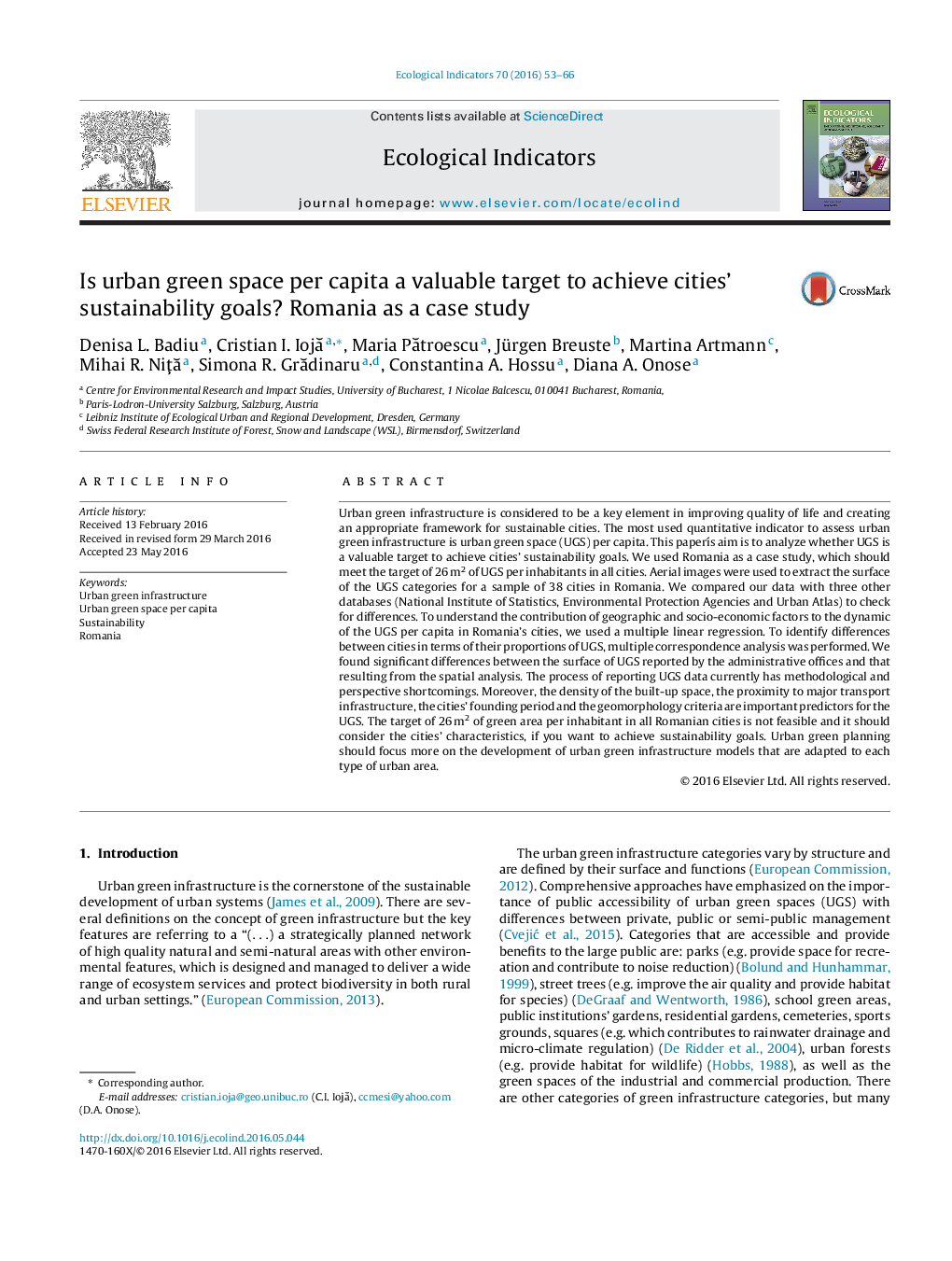| Article ID | Journal | Published Year | Pages | File Type |
|---|---|---|---|---|
| 6293052 | Ecological Indicators | 2016 | 14 Pages |
Abstract
Urban green infrastructure is considered to be a key element in improving quality of life and creating an appropriate framework for sustainable cities. The most used quantitative indicator to assess urban green infrastructure is urban green space (UGS) per capita. This papeÅs aim is to analyze whether UGS is a valuable target to achieve cities' sustainability goals. We used Romania as a case study, which should meet the target of 26Â m2 of UGS per inhabitants in all cities. Aerial images were used to extract the surface of the UGS categories for a sample of 38 cities in Romania. We compared our data with three other databases (National Institute of Statistics, Environmental Protection Agencies and Urban Atlas) to check for differences. To understand the contribution of geographic and socio-economic factors to the dynamic of the UGS per capita in Romania's cities, we used a multiple linear regression. To identify differences between cities in terms of their proportions of UGS, multiple correspondence analysis was performed. We found significant differences between the surface of UGS reported by the administrative offices and that resulting from the spatial analysis. The process of reporting UGS data currently has methodological and perspective shortcomings. Moreover, the density of the built-up space, the proximity to major transport infrastructure, the cities' founding period and the geomorphology criteria are important predictors for the UGS. The target of 26Â m2 of green area per inhabitant in all Romanian cities is not feasible and it should consider the cities' characteristics, if you want to achieve sustainability goals. Urban green planning should focus more on the development of urban green infrastructure models that are adapted to each type of urban area.
Related Topics
Life Sciences
Agricultural and Biological Sciences
Ecology, Evolution, Behavior and Systematics
Authors
Denisa L. Badiu, Cristian I. IojÄ, Maria PÄtroescu, Jürgen Breuste, Martina Artmann, Mihai R. NiÈÄ, Simona R. GrÄdinaru, Constantina A. Hossu, Diana A. Onose,
